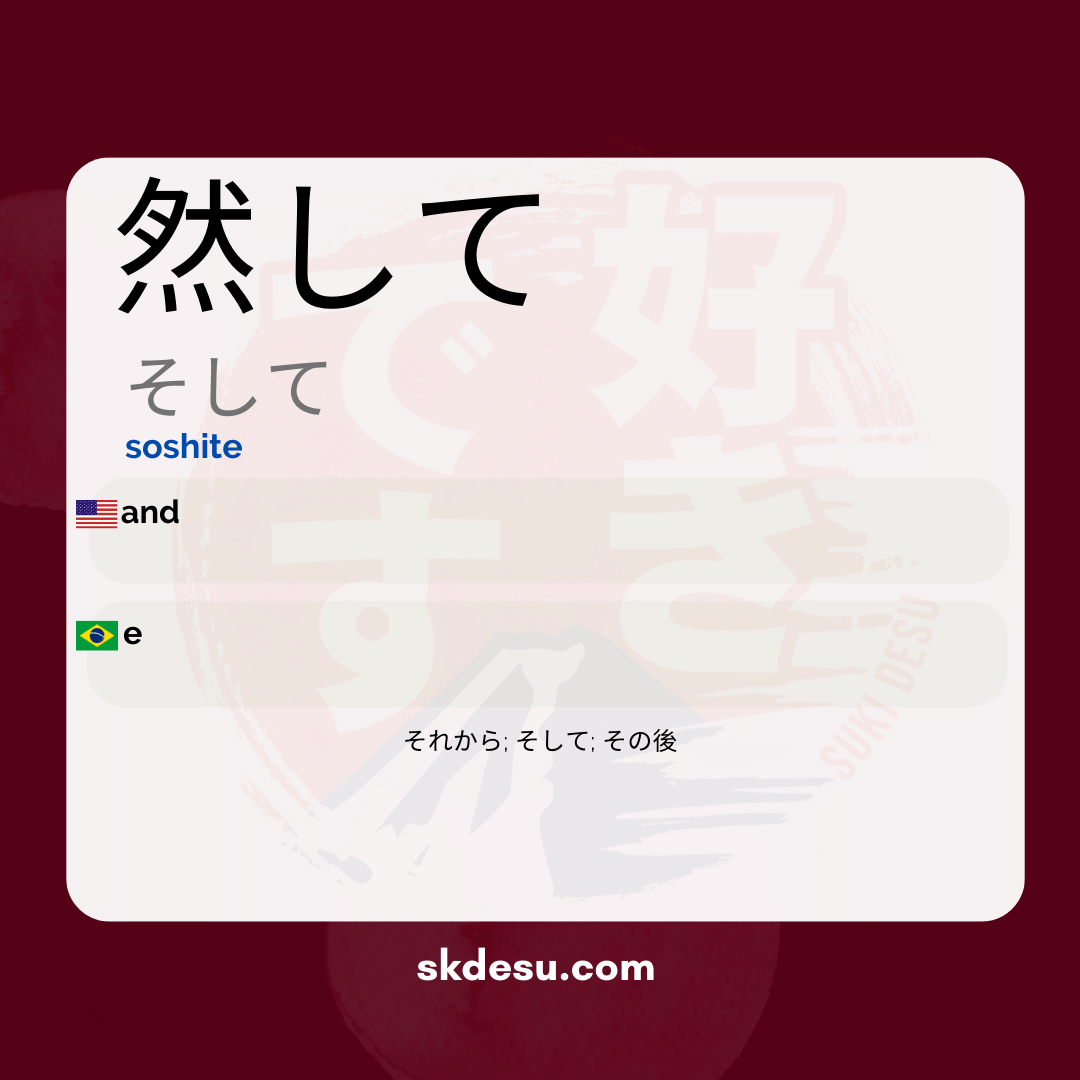Translation and Meaning of: 然して - soshite
The Japanese word 然して [そして] is a common term in everyday life, yet it can cause confusion for language students. Its meaning and use are simple, but understanding its context and origin helps to memorize it better. In this article, we will explore what this conjunction represents, how it is used in sentences, and why it is so frequent in spoken and written Japanese.
In addition to explaining its translation and grammatical function, we will discuss curiosities about its origin and how it differs from other similar words. If you have ever wondered why the Japanese use そして so much or how to apply it correctly, this text will clarify these issues in a straightforward and practical manner.
The meaning and use of 然して [そして]
In Portuguese, 然して [そして] can be translated as "and then," "thus," or simply "and." It functions as a conjunction that connects ideas or actions in sequence, providing fluidity to the discourse. Unlike "and," which can be used in lists, そして is more commonly found in narratives or explanations.
A practical example is the phrase "勉強をして、そして寝た" (I studied and then slept), where the word helps to show the order of events. It frequently appears in conversations, texts, and even in media such as animes and dramas, reinforcing its importance in learning Japanese.
The origin and writing of そして
The kanji form, 然して, is rarely used nowadays, with the hiragana version そして being more common. The kanji 然 (zen, nen) carries meanings such as "thus" or "in this way," which explains its connection to the idea of continuity. This etymological root helps to understand why the word is used to connect actions or thoughts.
Although the kanji writing is valid, the Japanese prefer hiragana as it is simpler and more fluid in everyday writing. Students may encounter the kanji version in more formal or literary texts, but the essential thing is to master the use of hiragana for daily life.
Tips for memorizing and using そして correctly
An effective way to memorize そして is to associate it with situations where there is a clear sequence of events. Phrases like "I went to the supermarket, and then I did some shopping" illustrate its function well. Repeating examples like this out loud helps to internalize the term.
Another tip is to pay attention to dialogues in animes or podcasts, where そして appears naturally. Observing its real usage in spoken Japanese makes intuitive understanding easier. Over time, you will start using it effortlessly, like a native speaker.
Vocabulary
Expand your vocabulary with related words:
Synonyms and similar words
- それから (sore kara) - So, next; often used to indicate a sequence of events or actions.
- そして (soshite) - And then; it connects two sentences or actions, emphasizing continuity.
- その後 (sono ato) - After that; it refers to a point in time following a specific event, usually more temporal than other expressions.
Related words
Romaji: soshite
Kana: そして
Type: adverb
L: jlpt-n3, jlpt-n1, jlpt-n5
Translation / Meaning: I'm sorry, but I need a text or string to translate from Portuguese to English. Please provide the content you'd like me to work on.
Meaning in English: and
Definition: Furthermore, however
Quick Access
- Vocabulary
- Writing
- Sentences
How to Write in Japanese - (然して) soshite
See below a step-by-step guide on how to write the word by hand in Japanese. (然して) soshite:
Example Sentences - (然して) soshite
See below some example sentences:
Nenhum resultado encontrado.
Other Words of this Type: adverb
See other words from our dictionary that are also: adverb

